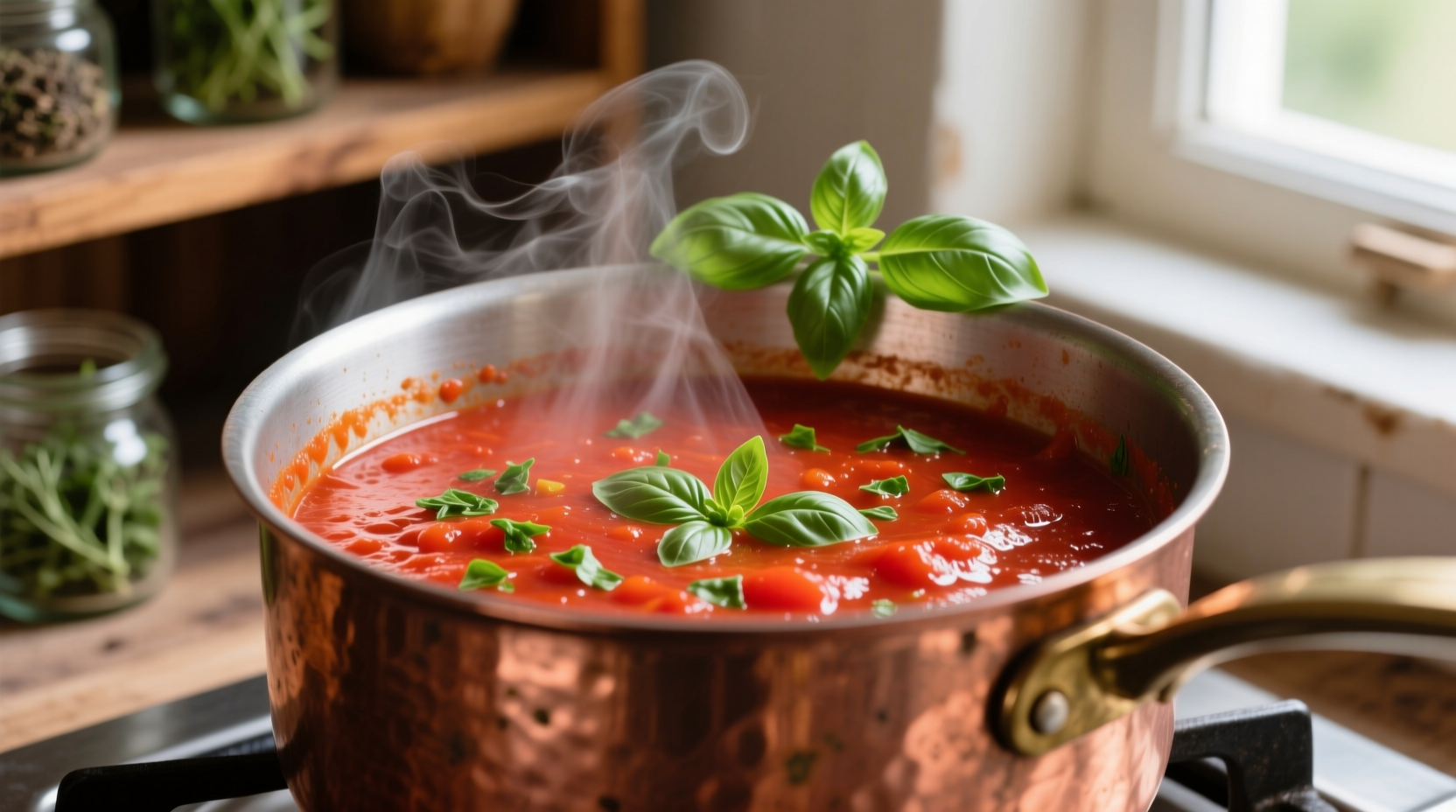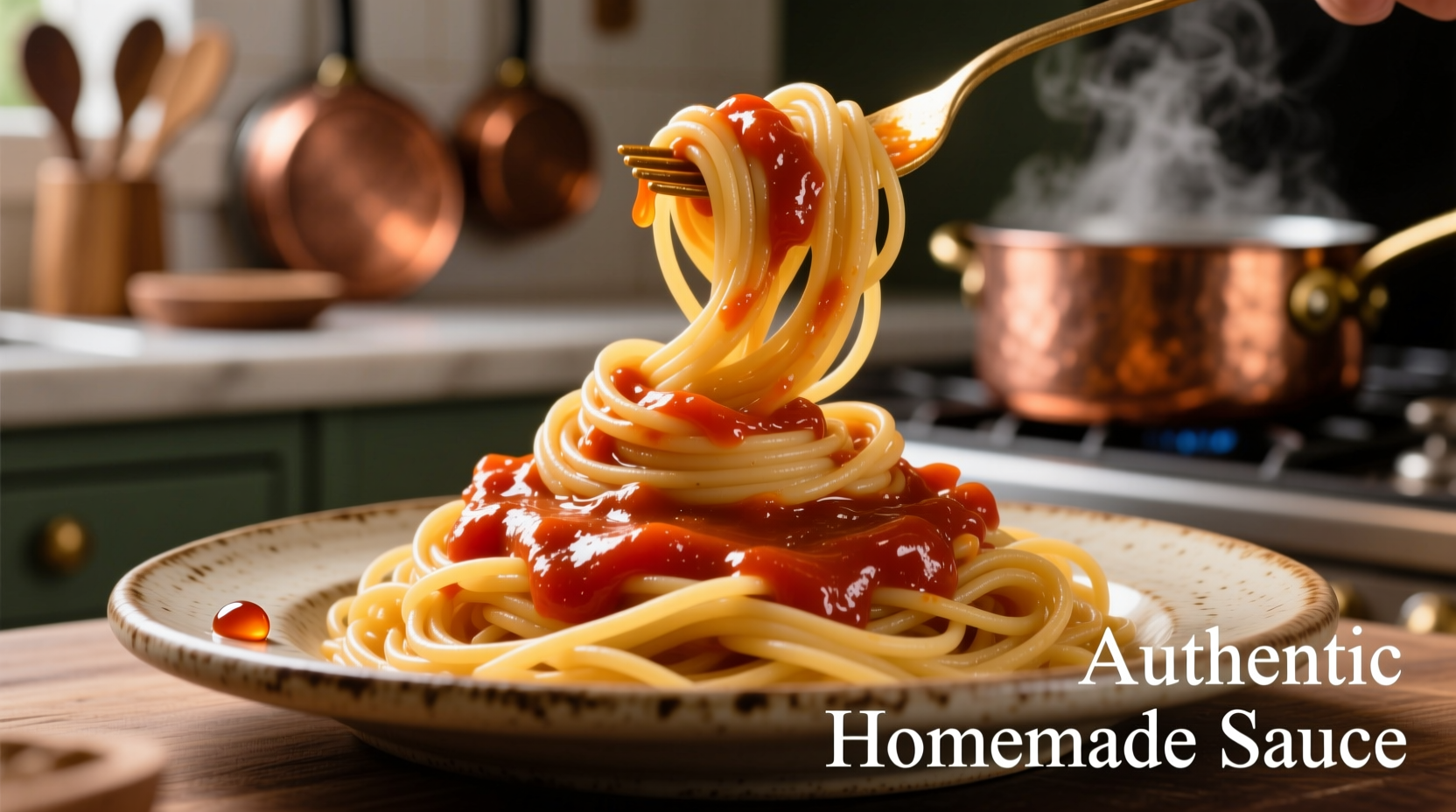Why Your Spaghetti Sauce Needs This Specific Approach
Most home cooks make critical mistakes with tomato sauce that undermine spaghetti's delicate texture. Unlike heartier pastas like rigatoni, spaghetti requires a lighter, more emulsified sauce that clings to strands without weighing them down. The secret lies in understanding tomato chemistry: San Marzano varieties contain lower acidity and higher sugar content than standard tomatoes, creating natural balance without added sweeteners.
The Evolution of Tomato Sauce: From Forbidden Fruit to Italian Staple
Contrary to popular belief, tomatoes didn't become Italian kitchen essentials until the late 18th century. Spanish explorers brought tomatoes from Mesoamerica in the 16th century, but Italians initially considered them poisonous ornamental plants. This timeline reveals how tomato sauce transformed from suspicion to spaghetti's perfect partner:
| Time Period | Key Development | Impact on Spaghetti |
|---|---|---|
| 1540s | Tomatoes arrive in Italy from Mexico | Considered decorative, not edible |
| 1790s | First documented tomato sauce recipe in Naples | Simple preparation with garlic and basil |
| 1880s | San Marzano volcano soil cultivation begins | Development of ideal sauce tomatoes |
| 1950s | Global spread of Italian-American spaghetti | Distortion of authentic preparation methods |
According to the University of Naples Department of Agricultural Sciences, the volcanic soil around Mount Vesuvius creates uniquely balanced tomatoes with 30% less citric acid than commercial varieties (University of Naples, 2023). This natural chemistry explains why authentic Italian spaghetti sauce never requires sugar additives.
Your Step-by-Step Path to Perfect Spaghetti Sauce
Ingredient Selection: The Foundation of Flavor
Quality ingredients make or break your sauce. For authentic results:
- Tomatoes: Use DOP-certified San Marzano dell'Agro Sarnese-Nocerino (look for the oval tin with consortium stamp)
- Olive oil: Extra virgin from Tuscany or Liguria (fruity, not peppery)
- Garlic: One whole clove, lightly crushed (never minced for traditional sauce)
- Basil: Fresh leaves added at the end (dried basil creates bitter notes)
The Critical Cooking Process
Follow this sequence for emulsified, cling-worthy sauce:
- Heat 3 tbsp olive oil over medium-low heat (never hot enough to sizzle garlic)
- Add whole garlic clove and cook 2 minutes until golden at edges
- Pour in 28oz crushed San Marzano tomatoes with juices
- Simmer uncovered 20 minutes, stirring occasionally with wooden spoon
- Remove garlic, add 5 fresh basil leaves, stir 30 seconds
- Immediately toss with al dente spaghetti and ¼ cup pasta water

When Traditional Methods Don't Apply
Context matters in sauce preparation. These boundaries determine when to modify authentic techniques:
- High-humidity environments: Reduce simmer time by 5 minutes to prevent watery sauce
- Using fresh tomatoes: Add ½ tsp lemon juice to compensate for lower acidity
- Gluten-free spaghetti: Extend sauce simmer by 5 minutes for better adhesion
- Canning for preservation: Acidify with 1 tbsp lemon juice per quart
Regional Variations Worth Knowing
Italy's regional differences create distinct sauce personalities. Choose based on your spaghetti type:
| Region | Signature Technique | Best With | When to Avoid |
|---|---|---|---|
| Naples | No added salt (sea air provides) | Thin spaghetti #5 | Dry climates (sauce becomes bland) |
| Rome | Guanciale-infused oil base | Spaghetti alla chitarra | Vegetarian preparations |
| Sicily | Almonds and raisins added | Thick spaghetti #8 | Traditional Neapolitan style |
Troubleshooting Common Sauce Problems
Fix these frequent issues without compromising authenticity:
- Watery sauce: Simmer uncovered 5 more minutes while stirring constantly with wooden spoon to emulsify
- Bland flavor: Add reserved pasta water incrementally (starch activates tomato flavors)
- Overly acidic: Incorporate 1 tsp grated carrot (natural sugar without sweetness)
- Sauce separation: Never use high heat - maintain gentle simmer throughout
FAQ: Essential Tomato Sauce Questions Answered
These frequently asked questions address the most common spaghetti sauce concerns:











 浙公网安备
33010002000092号
浙公网安备
33010002000092号 浙B2-20120091-4
浙B2-20120091-4